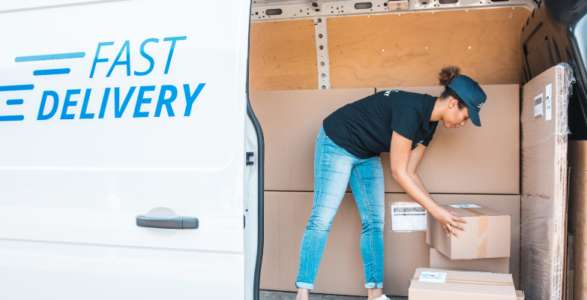How to Budget for Your Business Car Lease

Published 10 September 2024
Leasing a vehicle for business use is an increasingly popular option for many companies. It offers flexibility, lower upfront costs, and the ability to regularly upgrade to newer models. However, like any financial commitment, it’s crucial to budget carefully to ensure that your business doesn’t face unexpected costs down the road. Understanding the intricacies of a contract hire lease and setting a realistic budget can be the difference between a smooth, cost-effective experience and a financial burden.
Setting a Realistic Budget
Assessing Your Business Needs
Before diving into the financials, take a step back and evaluate what your business truly needs from a vehicle. Consider the daily mileage your team will likely cover—will the car be primarily for short city drives or long motorway journeys? The type and size of the vehicle are also critical. A compact car might suffice for city errands, but if you’re transporting goods or multiple team members, a larger vehicle might be necessary.
Don’t forget to account for the features and amenities required. Do you need advanced safety features, a high-tech navigation system, or extra cargo space? Also, think about the future: how might your business grow, and will your vehicle needs change as a result?
Determining Your Affordability
Once you’ve assessed your needs, it’s time to determine what your business can afford. Start by considering the monthly lease payments. These will likely form the bulk of your expenses, but they aren’t the only cost to keep in mind.
The initial deposit, while usually less than a down payment on a purchase, can still be significant. Maintenance costs are another consideration—routine servicing, tyre replacements, and unexpected repairs can add up quickly. Don’t forget insurance premiums, which can vary widely depending on the type of vehicle and the level of coverage.
Fuel costs are another key factor. Fuel-efficient vehicles may cost more upfront but can save money in the long run. Creating a detailed budget that lists all potential expenses, using historical data or industry benchmarks to estimate costs, and factoring in unexpected costs, such as repairs, is essential to ensure you’re fully prepared.
Managing Contract Hire Expenses
Lease Payments
The monthly lease payment is often the most visible cost associated with a business car lease. This payment is influenced by the lease term, the vehicle’s value, and mileage limits. Exceeding mileage limits can result in hefty penalties, so it’s crucial to estimate your mileage accurately and choose a lease agreement that accommodates your needs. Also, be aware of early termination fees if you need to end the lease prematurely, which can be costly.
Initial Deposit
The initial deposit, often a multiple of the monthly payment, can impact the overall cost of the lease. A higher deposit can reduce your monthly payments, but it’s essential to ensure that this upfront cost fits within your budget. It’s worth negotiating for a lower deposit if cash flow is a concern.
Maintenance Costs
Regular maintenance is necessary to keep your vehicle in good condition and avoid more expensive repairs down the line. Tyre replacements and unexpected repairs can also add to your expenses. Many leasing companies offer maintenance packages that cover routine maintenance costs, which can be a smart way to manage these expenses.
Insurance Premiums
Insurance is a non-negotiable expense, and business insurance coverage often differs from personal policies. Factors such as the vehicle’s value, usage, and driver history will affect your premiums. It’s advisable to shop around for the best rates and coverage to ensure you’re not overpaying.
Fuel Costs
Fuel efficiency should be a priority when selecting a vehicle, as it directly impacts your running costs. Fuel prices can fluctuate, so consider vehicles with good fuel economy or alternative fuel options. If your business reimburses employees for mileage, ensure that the reimbursement rate covers the actual fuel costs.
Additional Considerations
Tax Implications
Leasing a vehicle has different tax implications compared to purchasing one outright. Some lease payments may be deductible as a business expense, but it’s essential to consult with a tax advisor to understand the full tax benefits.
Lease End Options
As your lease term nears its end, you’ll need to decide whether to return the vehicle, extend the lease, or perhaps enter into a new lease agreement. Returning the vehicle may incur costs for excess mileage, damage, or wear and tear, so it’s crucial to plan for these potential expenses. Extending the lease can be a cost-effective option if you need the vehicle for a bit longer, but ensure that the terms are favourable.
Tips for Successful Leasing
Successful leasing is about more than just signing on the dotted line. Negotiating the terms of your lease, monitoring your expenses throughout the lease term, and planning for the lease end are all critical steps. Familiarise yourself with the fair wear and tear guidelines provided by your leasing company to avoid unexpected charges at the end of your lease. Calculating your expected mileage accurately and ensuring your lease agreement includes a sufficient mileage allowance can also save you money in the long run.
By carefully considering these factors and planning ahead, you can effectively manage your business car lease expenses and make informed decisions that benefit your business. Whether you’re leasing your first business vehicle or renewing an existing contract, a well-planned budget is the key to a successful leasing experience.
Take the next step today!
Discover flexible leasing options with CVS Ltd, even with bad credit.
Back to all help and advice articles







